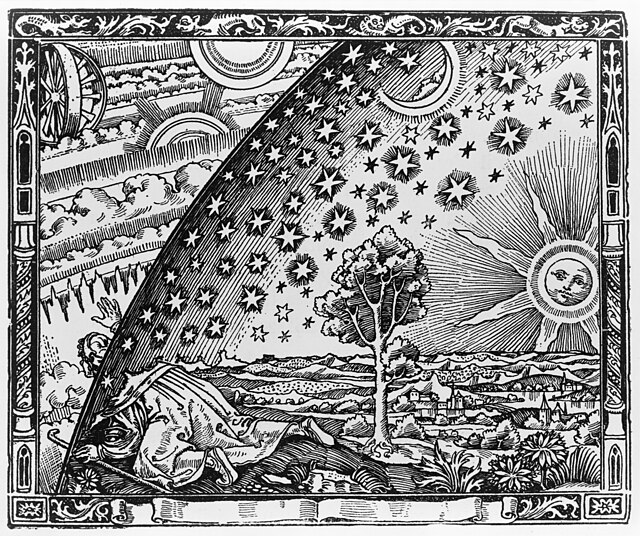In ancient near eastern cosmology, the firmament signified a cosmic barrier that separated the heavenly waters above from the Earth below. In biblical cosmology, the firmament is the vast solid dome created by God during the Genesis creation narrative to divide the primal sea into upper and lower portions so that the dry land could appear.
The Flammarion engraving (1888) depicts a man crawling under the edge of the sky, depicted as if it were a solid hemisphere, to look at the mysterious Empyrean beyond.
Ancient near eastern cosmology
Ancient near eastern (ANE) cosmology refers to the plurality of cosmological beliefs in the Ancient Near East from the 4th millennium BC to the formation of the Macedonian Empire by Alexander the Great in the second half of the 1st millennium BC. This system of cosmology went on to have a profound influence on views in Egyptian cosmology, early Greek cosmology, later Jewish cosmology, patristic cosmology, and Islamic cosmology. Until the modern era, variations of ancient near eastern cosmology survived with Hellenistic cosmology as the main competing system.
Mesopotamia's image of the world, following the path Gilgamesh takes in the Epic of Gilgamesh
Sun God Tablet
Mosaic of Alexander the Great from Pompei




